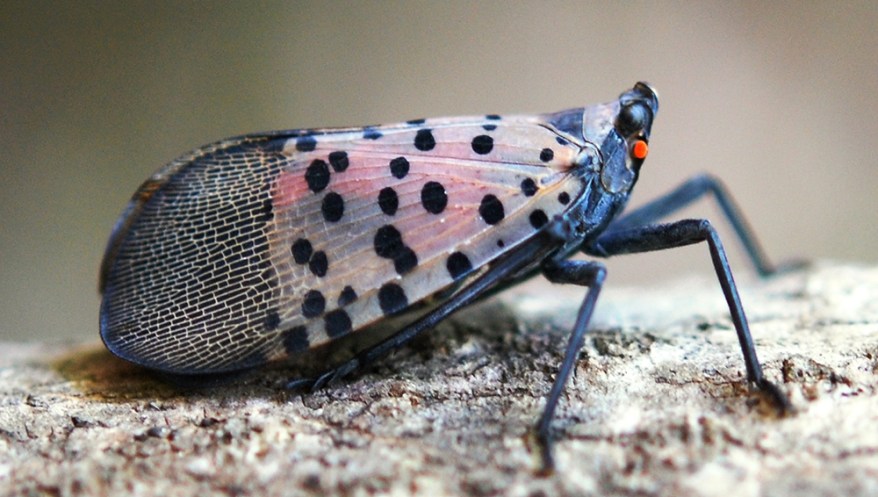This past Friday, Ms. Louise Bugbee, of the US Dept. of Agriculture (USDA), came to West Easton Borough Hall. She was there to speak with Borough Manager Joan Heebner about our borough helping fight an invasive species of insect, the Spotted Lanternfly (SLF).
I was at Borough Hall to get some information on vandalized playground equipment. When I heard someone had arrived to remove a problem in West Easton, I must admit to being slightly disappointed the topic of discussion was the SLF. I was hoping it was a follow-up arrest on a resident who allegedly had their weapon confiscated by the Pennsylvania State Police.
I invited myself into the meeting, anyway.
The SLF was seen for the first time in the United States in 2014 in Berks County, roughly between Reading and Allentown.
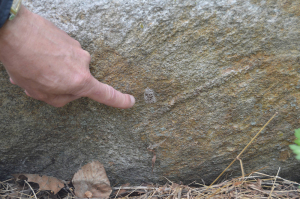
In February of 2018, Gov. Tom Wolf allocated $1.6 million to eradicate the insect. A day after his allocation, the Federal government followed with an announcement that it would provide Pennsylvania another $17.5 million in emergency funding for the same purpose.
The SLF was confirmed in West Easton last year.
It was in 2018 the USDA targeted the local area for control methods, reaching out to Easton, Palmer, Forks, Williams Township, and other communities to discuss killing or treating the SLF nymph host trees on public property.
As is sometimes the case, due to our borough’s name, we were not informed of the planned control because the USDA assumed West Easton was part of the City of Easton. Having realized the error, they want to include us this year.
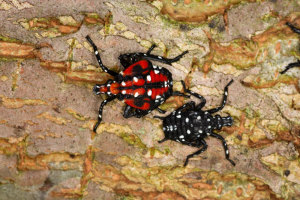
The plan, as described by Ms. Craig, is to break the cycle of SLF reproduction, by interfering with their food supply while they are in the nymph stages. The USDA also hopes to keep the insects from spreading, by preventing their hitch hiking on goods and vehicles traveling in and out of the quarantine zone.
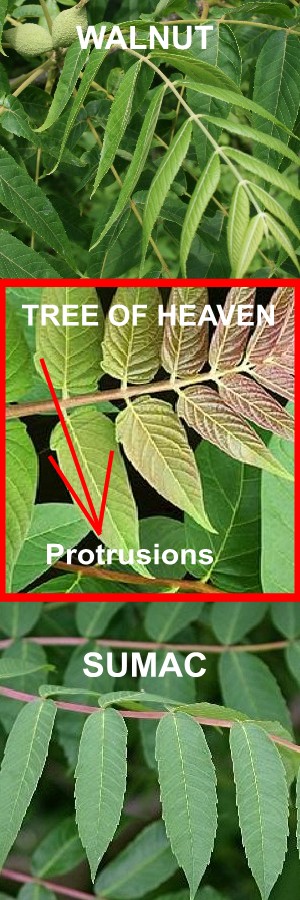
The SLF nymph’s host tree is the Tree of Heaven (ailanthus altissima). Tree of Heaven leaves resemble those of the Walnut and Sumac trees. The difference of a small protrusion, at the base of the leaf, makes the Tree of Heaven easily identifiable.
The bark on the Tree of Heaven is smoother than that of the Walnut. The branches are more hollow and spongy along the interior than the Sumac, or Walnut.
Destroy the host tree, or make it poisonous to the SLF nymph and you will reduce the adult SLF population that damages Pennsylvania’s crops, valued at $18 billion of revenue.
The USDA reports they’ve seen as much as a 90-95 percent drop in SLF population in other areas where the treatment has been applied. Targeting the Tree of Heaven has seen little negative consequence because no native insects, vertebrates, or birds rely on it for food.
As far as the borough’s Trees of Heaven on public property being treated, the decision will be made by Council President Paul James, who would have to sign an agreement allowing the USDA to begin their job in West Easton.
The USDA hopes to start in July, while the young black nymphs are still populating Trees of Heaven. The borough will be surveyed by teams from the federal agency, for infestation. The trees would then be marked for appropriate treatment.
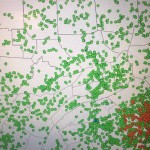
Private property owners who have Trees of Heaven will be contacted by the USDA, who will seek permission to apply an herbicide, or insecticide, depending upon the size of tree.
Trees with chest height trunk diameter of less than 6″ will have herbicide applied. Those larger than 6″ in diameter will be treated with insecticide.
A concern I raised is in the details of the treatment. I asked that Material Safety Data Sheets (MSDS) be provided for the treatment applications. They will be sent to the borough office and copies forwarded to our Council President, Mr. James.
MSDS will allow Mr. James to make an informed decision and provide details, should questions arise about pets and children coming in contact with the herbicides and pesticides, which is applied directly to individual trees. I would expect the MSDS will be made available on the borough’s website.
Taking some time after the meeting to look around the borough it didn’t take me long to find a small grove of Trees of Heaven located near the top of the hill above Gross Park, running below the trestle. Trees most of us mistook for Sumac.
Indeed, the trees were infested with the black and white SLF nymphs. I hope the USDA realizes how difficult it is to rid West Easton of a nasty pest… the SLF.
Disclaimer: On January 4, 2016, the owner of WestEastonPA.com began serving on the West Easton Council following an election. Postings and all content found on this website are the opinions of Matthew A. Dees and may not necessarily represent the opinion of the governing body for The Borough of West Easton.

